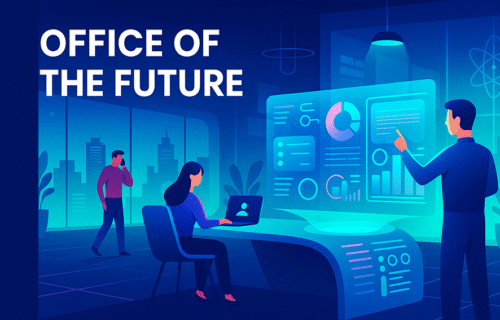According to the Walter Herz report “26 Office Trends for 2026”, the office of the future is no longer just a place of work — it is an experience and a strategic tool for organisational growth. Evolving from a cost centre into a platform for culture, innovation, and collaboration, the modern workplace reflects the intersection of three driving forces: people, technology, and sustainability.
HR and Administration departments are now emerging as strategic partners, coordinating innovation, ESG initiatives, and employee experience. Their mission is not only operational but transformational — to build a cohesive, human-centred work ecosystem.
“The office today must be adaptable — companies are seeking environments that evolve with their teams. Flexibility is not just about shorter leases; it’s about creating a framework where growth, downsizing, or hybrid work can happen seamlessly.” – Michael Smithing, Managing Director, DBH Flex
The modern office has become a living ecosystem — a social and creative hub that supports collaboration and strengthens company identity. Design now carries cultural meaning, merging aesthetics with function.
“Companies want workplaces that function as social hubs — spaces that attract people back to the office because they add value to their day. Mixed-use developments answer that demand by combining work, leisure, and wellbeing in one place.” – Geo Mărgescu, Founder & CEO, Forte Partners
Flexibility and wellbeing remain central. Biophilic design, natural light, greenery, and acoustic comfort have become measurable productivity tools. At the same time, ESG-compliant design and environmental performance now define market standards.
“Flexibility and sustainability have become two sides of the same coin. Tenants expect energy-efficient buildings and adaptable layouts that support collaboration, privacy, and wellbeing at the same time.” – Antoniu Panait, General Manager, Vastint Romania
The office of 2026 functions as a fully integrated digital organism. AI, IoT, and smart building management systems connect every operational layer — from lighting and air-conditioning to occupancy and security. Real-time analytics drive predictive maintenance, cost optimisation, and a seamless tenant experience.
Hybrid communication is being redefined through “Bring Your Own Meeting” (BYOM) systems and AI-enabled conferencing tools that make remote collaboration effortless. Security now spans digital, physical, and sanitary dimensions.
“Multidimensional security — physical, sanitary, and digital — is becoming one of the most important aspects of property management.” – Joanna Piechota-Flinik, Grupa Impel
Despite rapid technological progress, people remain at the core of the office of the future. Artificial intelligence complements, rather than replaces, human potential. Routine tasks are automated so employees can focus on creativity and personal development.
Leadership models are shifting from supervision to mentorship. Empathy, autonomy, and trust define the new management culture. Wellbeing, mental health, and work–life balance are now seen as performance metrics, not benefits.
“The landlord-tenant relationship is becoming a partnership. Success depends on ongoing dialogue, shared ESG goals, and a focus on tenant satisfaction — not just lease terms.” – Mátyás Gereben, Country Manager, CPI Hungary
Across Central and Eastern Europe, developers and occupiers are converging on the same priorities — flexibility, ESG alignment, and tenant experience. From Budapest to Bucharest and Warsaw, landlords are reshaping assets into service-driven environments that combine digital infrastructure with social value.
“Compact mixed-use projects are redefining urban work environments. Their human scale, integrated services, and energy-efficient design make them more resilient in an uncertain market.” – CIJ EUROPE feature, “The Rise of Smaller Mixed-Use Buildings”
Adaptive reuse is another emerging trend, as seen in office-to-residential conversions such as Lipowy Office Park in Warsaw. This approach reflects a shift toward sustainability through reuse — extending a building’s life cycle rather than replacing it.
The direction is clear: tomorrow’s workplace will be intelligent, flexible, and empathetic — a space where technology, design, and culture work together to create value for both people and business.
Source: Walter Herz and CIJ EUROPE Analysis Team
